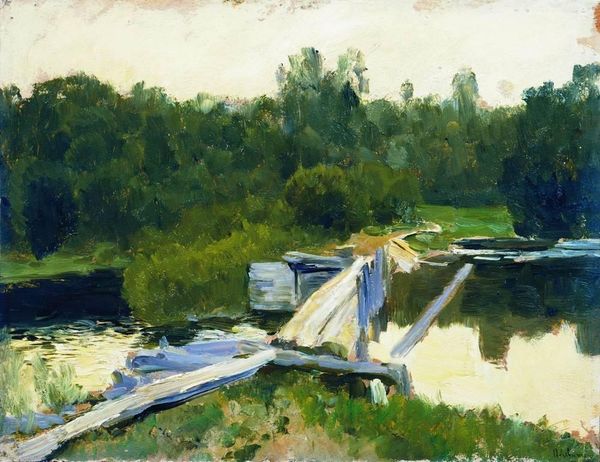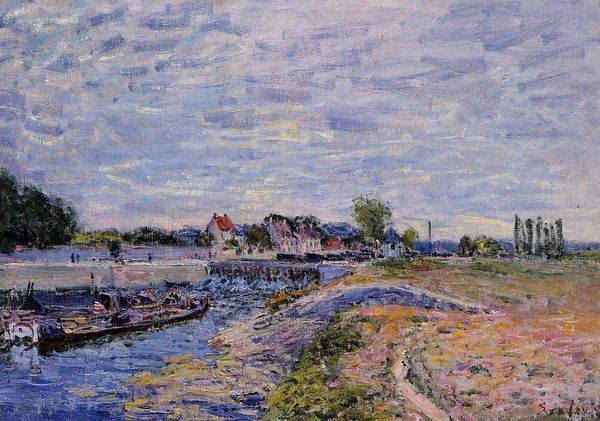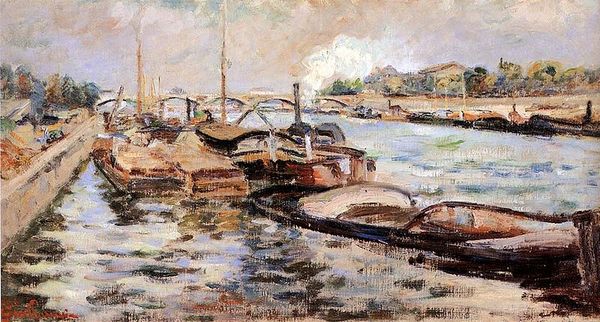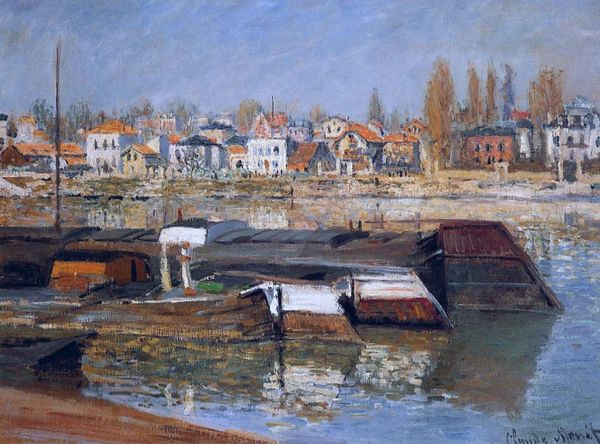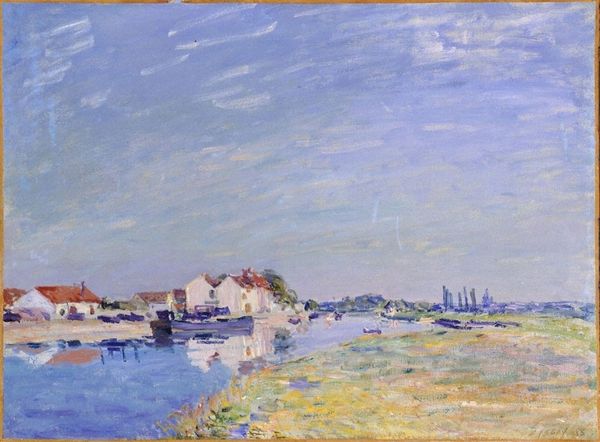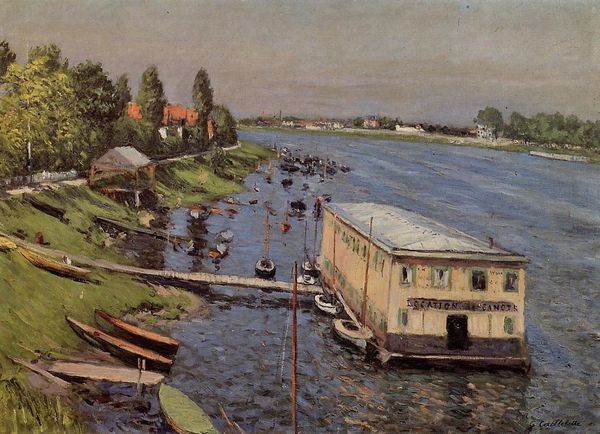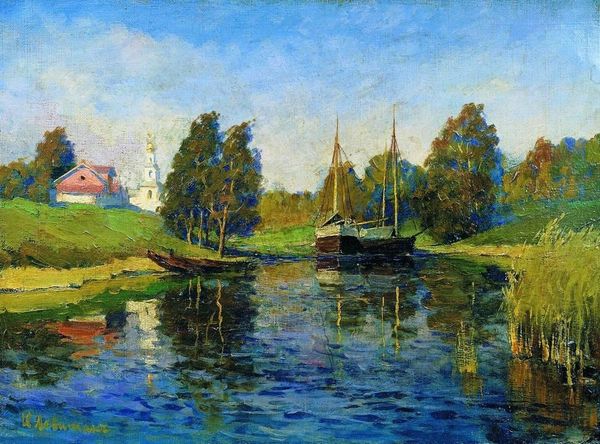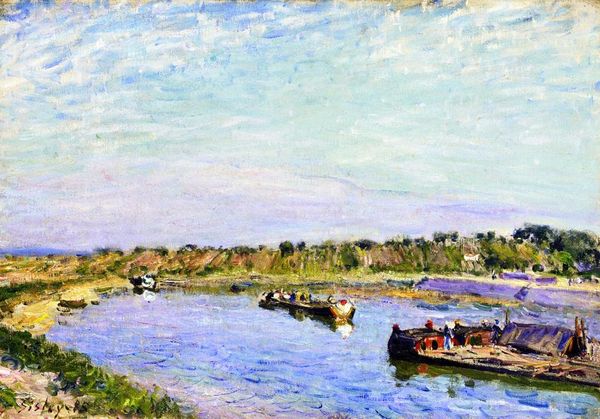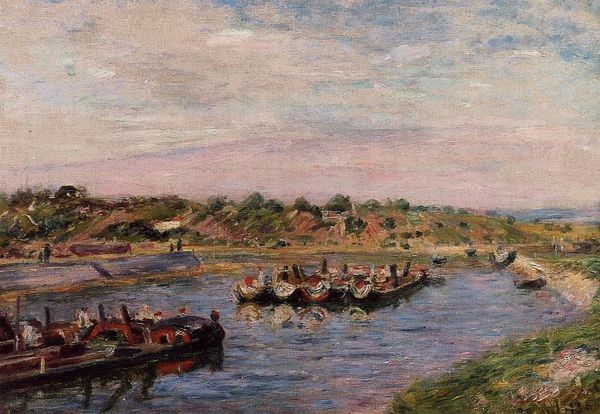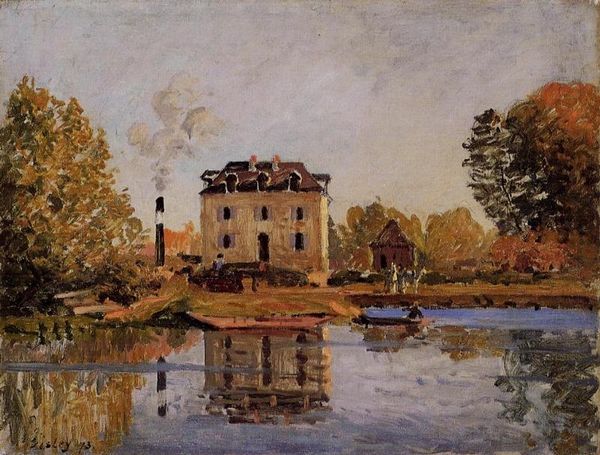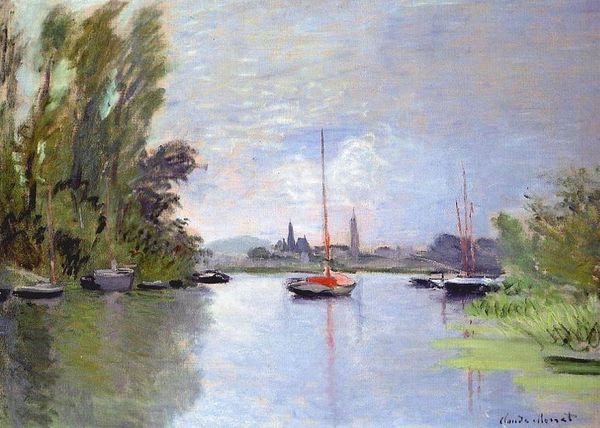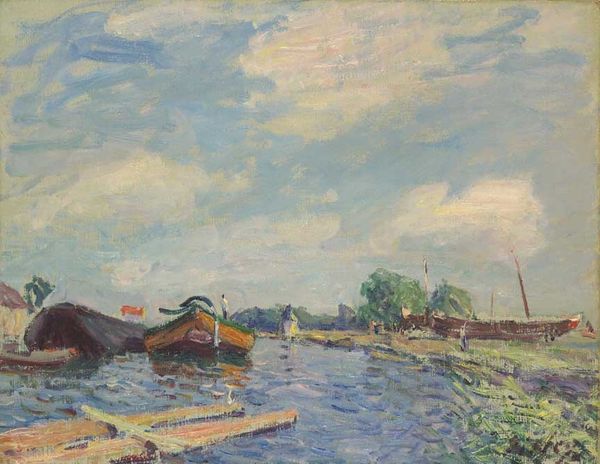
painting, metal, oil-paint
#
painting
#
metal
#
oil-paint
#
landscape
#
oil painting
#
expressionism
#
seascape
#
cityscape
#
modernism
#
expressionist
Copyright: Public domain
Editor: Here we have Edvard Munch’s "Lübeck Harbour with the Holstentor," painted in 1907, using oil paints, possibly on metal. It strikes me as oddly calm for Munch. How do you interpret this work? Curator: Calm perhaps, but notice how Munch renders the Holstentor – its iconic towers seem to both loom and recede, don't they? He reduces the scene to near symbolic representation, particularly in how the water reflects yet distorts reality. Consider what the Holstentor represented to Lübeck: power, protection, a gateway. Does Munch uphold or challenge these meanings? Editor: That’s interesting, I hadn't considered the Holstentor as a symbol. It makes me wonder, are the distorted reflections in the water a comment on the city's changing identity during the early 20th century? Curator: Precisely. Think about the rise of industrialization, the shifts in social structures. The reflections are fragmented, uncertain. The water, traditionally a symbol of life and fluidity, becomes a mirror reflecting the anxieties of a society in transition. Editor: The way you connect the formal elements, like the reflections, with historical and cultural anxieties is really insightful. It makes me see so much more in what I initially perceived as just a cityscape. Curator: Visual symbols speak volumes when we learn to decipher them within their proper context. The unsettling beauty here suggests more than what is apparent. It becomes a mirror reflecting not only a city but also a time of enormous uncertainty and promise. Editor: I'll never look at a Munch painting the same way again! Thanks so much. Curator: My pleasure. The real joy lies in continually revisiting these artworks, allowing them to reveal new facets over time.
Comments
No comments
Be the first to comment and join the conversation on the ultimate creative platform.

